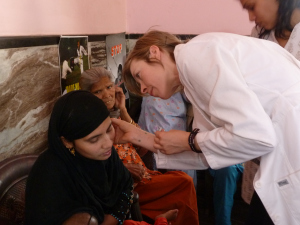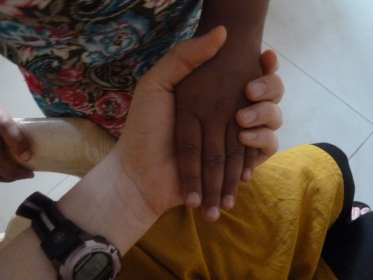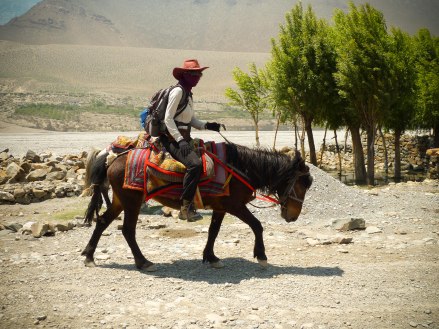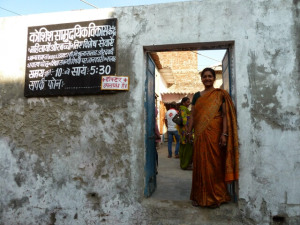
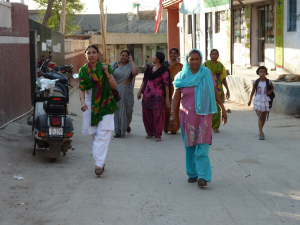
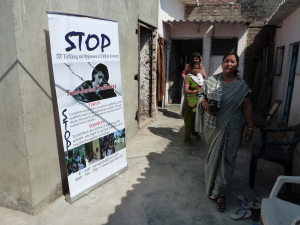
I have been working in the slums a lot recently, more than doubling my number of treatments there! (Though I stick to ear acupuncture with these clinics because of the sheer volume!) Yesterday I hosted a clinic in Bawana slums, one of the poorest and predominantly Muslim communities of Delhi. STOP had announced that the clinic was happening from 11-1pm. We showed up at 10:45 to 36 women (mostly) and men eagerly awaiting treatment! It was go-time for me! I hustled and got them all up to speed about what to expect and had them all set up for treatment in about an hour…then as soon as I was done with that part, I was back to the first person I started with to take their needles out. Each time a chair opened up, another person came in and sat down. I did not stop moving until I sat back in the car for the two-hour ride home. Whew.
The slums, kindly referred to by STOP staff as the “Communities”, are places where the lowest caste of India dwell. They are continuously getting pushed to the outskirts of the cities, further and further from middle and upper caste societies. These are the most marginalized of people. India’s census bureau defines slums as, “residential areas where dwellings are unfit for human habitation.” And in India as per their census, they created a system for designating the different types of slums labelling them as either notified, recognized, or identified. Identified slums do not have legal status as a slum but must consist of at least 60-70 tenements and and have at least 300 residents in order to be considered an identified slum. Over 65 million people live in slums in India and over one-third of them are living in these so-called identified slums. In New Delhi specifically, there are over 1.7 million people living in slums and over 1 million in identified slums. What does this mean you ask? Since identified slums do not have legal status as a slum despite their immense population, this also means that the people who live there do not have access to legal protection and municipal services.
Wow, really? Yes.
This was heart-wrenching and mind-blowing to learn…
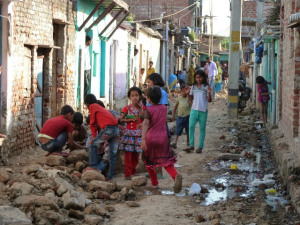
Kids playing in the streets of the slums
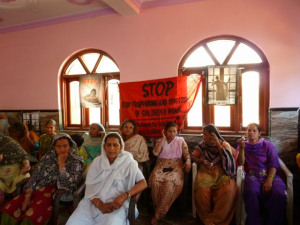
The brave women (mostly Muslim) of Bawana slums
What does STOP have to do in these slums? Well, to start the children and women of this population are the most vulnerable to being trafficked because of their extreme poverty, lack of protection and lack of access to resources. Bottom line, there is no one keeping track of these women and children. Each year, THOUSANDS of children go missing in India and many of them are never found. These are the children who are likely to wind up in brothels or even to be sold across the borders. And in India, a country known for having the worst sex-trafficking problem in the world, some of these children are outright murdered in the brothels with no trace of their existence left behind. So STOP has several programs going on in the slums in order to catch potential trafficking situations before they happen. They have several women who risk their lives to be “watchdogs” in their communities and report missing children, violent situations, abuse, etc. These are the women who have been piling into the community centers asking for treatment.
I have been working in both Tughlakabad and Bawana communities where STOP has created these projects. Women are the ones who need the most support so that they can not only protect each other but also protect the children of the community. That being said, there are some men in support of STOP’s mission and they show up at the centers for treatment, too! In fact, a couple of the women who were nervous about getting acupuncture for the first time were laughing and telling me, “make the men go first!” It made all of us laugh and the men happily went first! I cannot tell you how honored I feel to witness such camaraderie in these communities full of tragedy and despair. It’s quite profound.
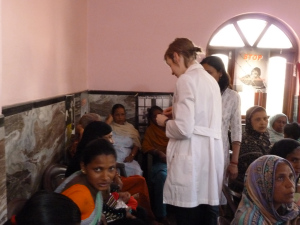
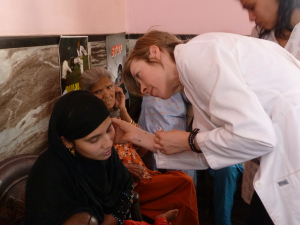
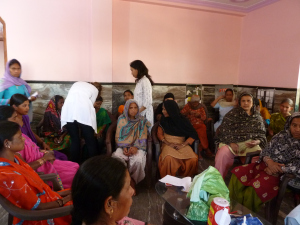 One of the women who came was probably the oldest person I have ever met in my life. There was even speculation as to how old she was among her very own family. So your guess is as good as mine and her family’s! At the end of the session, I went to her with my translator and told her how brave I thought she was for trying ear acupuncture and I thanked her for coming. She was delighted and smiled at me saying in her very low and groaning voice, “namaste”. So beautiful.
One of the women who came was probably the oldest person I have ever met in my life. There was even speculation as to how old she was among her very own family. So your guess is as good as mine and her family’s! At the end of the session, I went to her with my translator and told her how brave I thought she was for trying ear acupuncture and I thanked her for coming. She was delighted and smiled at me saying in her very low and groaning voice, “namaste”. So beautiful.
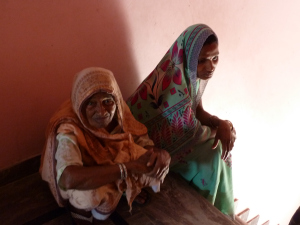
Elderly woman waiting on the stairs for a seat in the packed community room
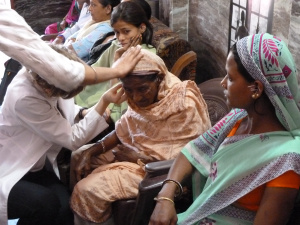
Life here has been so full recently that it’s been difficult finding time to sit down and document it all! But alas, today is New Delhi’s election day and so it has become a lovely and much-needed day off for myself!
A couple of updates: The course in Mumbai has been officially cancelled due to rioting around the elections. Just a little back story: apparently elections used to take place on the same day all over India but it was considered a most dangerous time because there was never enough policing to safeguard each area. So India began to stagger the elections in order to be able to send the extra police forces around to the election areas across the country. Sometimes, not always, there is such strong opposition between the parties that elections can become violent, stir up riots, and basically shut down a city. Riots in Mumbai began more than a week before elections so I was advised not to travel.
My work with the young women and children at Aashray has continued full-on. When I first started doing treatments at the safe house I was seeing about 7-9 girls in a day. And two days ago it was up to 15! So the girls are really enjoying the treatments and a few of the girls with the toughest cases are each experiencing some improvement which has been extremely rewarding. They are all still piling around the treatment tables and looking at me with big, deep, curious eyes, trying to make sense of this completely foreign medicine called acupuncture!
Love and light until next time!
For a BBC documentary on the slums of India, check out: m.youtube.com/watch?v=Vmpe4RuTTmw
“65 million people live in slums in India, says census data” www.thehindu.com

